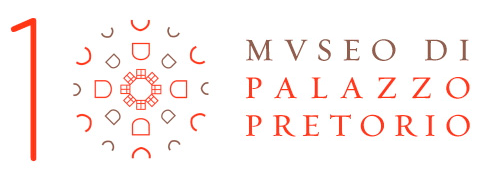Some masterpieces

On display In the room of the Holy Belt is a worn-out detached fresco. It shows the Madonna and Child with bright colours and delicate, refined draughtsmanship. It is attributed to the famous Agnolo Gaddi, who painted it in the years when he was frescoing the chapel of the Holy ...

One of the most important polyptyches exhibited in the room From late Gothic to the Renaissanceis the one from the monastery of San Matteo (St. Matthew). It was painted, as established by the merchant Francesco Datini in his will, by the Florentine Pietro di Miniato. The painting, considerably damaged, shows ...

The polyptych painted for the Badia delle Sacca abbey near Prato by Andrea di Giusto, who had been the collaborator of Masaccio in Pisa, can be seen in the section From late Gothic to the Renaissance.The work is a partial copy of an important polyptych by Lorenzo Monaco for ...

This fine altarpiece, on display in the section dedicated to Filippi Lippi and the Prato Workshop, is traditionally called Nativity but it would be more appropriate to title it Adoration of the Child. On the sides of the Child the main figures are absorbed in prayer, as well as those ...

This lovely ancon is displayed in the room dedicated to Donatello and Renaissance sculpture in Prato. Its figures, described with soft, vibrant lines, derive from an early 1470s Verrocchio relief (perhaps the terracotta work in the Birmingham Museum and Art Gallery). It is a work by the Florentine artist Benedetto ...

In the small room dedicated to Filippino Lippi we find a precious altarpiece commissioned in 1502 by the Gonfalonier (Chief Magistrate) and the Prato Priors (Guild Leaders) to this famous Prato painter, the son of Fra Filippo, to decorate the Audience Room of the Town Hall. The painting with its ...

In the section on The Great Altarpieces we find the panel painting with the Mystical Marriage, which was donated by Naldini in 1568 to the monastery of Santa Caterina da Siena on the occasion of his sister Annalena’s vestition, as attested to by some documents . The work was however ...

In the section on The Riblet donation two altarpieces by Alessandro Allori can be compared. The Miracle of the Grain and the Miracle of the Spring were painted for the chapel of Villa Spini in Motrone (Peretola), and with the painted panel by Santi di Tito were donated to the ...

Signed and dated by the famous painter Giovanni Bilivert, the refined but simple altarpiece shows the quiet, luminous figures of the Virgin Mary and the Archangel Gabriel in a diagonal arrangement, standing out from a dark, deep background. This painting is one of the most important 17th-century artworks ...

The canvas representing the miraculous episode from the life of St. Nicholas of Tolentino was painted by Mario Balassi between 1644 and 1647 for the church of San Francesco in Prato. Considered his masterpiece, this intricate theatrical composition shows a careful study of the figures in their gestures and physiognomies ...

This fine painting by one of the most important Italian artists of the 17th century, Mattia Preti, can be appreciated after its recent restoration. The dynamic scene, which was painted between 1635 and 1640, shows Abraham (with Sara and Isaac in the half-light) repudiating the slave Agar and their ...

One of the finest sculptures of the section on Lorenzo Bartolini is the 1821 full-figure portrait of countess Marina Dmitrievna Gur'eva, born Naryškina, a plaster model for the marble carved in the same year now in the Russian Hermitage. The portrait rejects Neoclassical schemes and conveys a lively ...

The Spinner is amarble sculpture with its skilful naturalistic expression and perfect craftsmanship is on show in the Lorenzo Bartolini room. The young, semi-naked woman with a serene and melancholy face, seated on a rock, would be an allusion to what is almost a symbol of Prato, its age-old cloth-making ...

In the section on 19th-century paintingin Prato there is an artwork with an intimate dialogue between the Virgin Mary and the Infant Jesus, called Madonna of the Kiss or of the Lily painted by the Pratese artist Antonio Marini and donated to the Municipality in 1867 by his widow, the ...

Beach Cabins is one of the two works by Ardengo Soffici displayed in the section on Soffici and the School of Prato. It was painted in Forte dei Marmi in 1927 and is the expression of the “return to order” after the formal experiments of the historical avant-garde movements. The ...

This dramatic composition, one of Lipchitz’s most pathos-charged works, was created by the artist just after his arrival in New York, where he had escaped in 1941 because of his Jewish origins from a France occupied by the German troops. The mutilated woman’s desperate gesture of appeal, her ...

